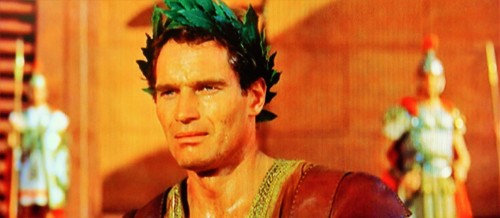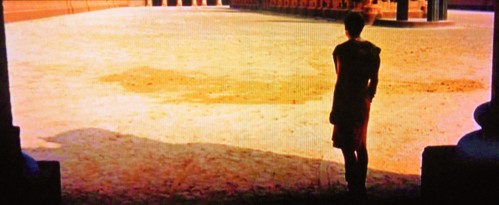 This year’s Easter feels different, perhaps because 2016 is an election year. Less the customary Easter weekend of peace and spirituality, it’s caucuses, delegates and speeches that capture attention. Brightly lit stages spotlight well-dressed politicians addressing hysterical followings. (That the politicos resemble various dark horses and lame ducks strutting around a field of wildly chirping chicks is probably just coincidence.)
This year’s Easter feels different, perhaps because 2016 is an election year. Less the customary Easter weekend of peace and spirituality, it’s caucuses, delegates and speeches that capture attention. Brightly lit stages spotlight well-dressed politicians addressing hysterical followings. (That the politicos resemble various dark horses and lame ducks strutting around a field of wildly chirping chicks is probably just coincidence.)
Perhaps not so ironic then, my annual spring viewing of Ben-Hur, the 1959 MGM masterpiece about the life of Judah Ben-Hur, just took on all new meaning, starting with the famous chariot race scene.
Roman citizens storm the bloodied sand on the huge coliseum racecourse. Flailing their wings in hysterical delight, hundreds dash toward Hur, their new charioteer hero. Despite a smashing victory over several chariot teams, Hur remains calm, caressing the four white stallions who led the way, horses who also crushed fallen foe Messala under their hooves.
Pontius Pilate, Rome’s leader, awaits arrival of the new champion. Ascending Pilate’s emperor box, Hur’s face glistens from sweat, accentuating expressions of humility, exhaustion and pride, contrasting stony Pilate, Rome’s grey-haired figurehead clothed in fine woven fabrics.
“A great victory. You are the people’s one true God,” Pilate tells Hur. “For the time being.”
Pilate rises from his throne and approaches Hur.
“I crown their God!” he proclaims, placing a leaf circlet on Hur’s bowed head.
The crowd noise is deafening. Having used strength of character, intelligence and humility to stay alive against so many odds thus far, and now utilizing his mighty courage in the arena, Hur has suddenly accumulated power and status beyond the imaginable. His headdress now accentuates a new countenance – fear.
~
Messala’s trampled body, what’s left of it, is strapped to a table below the coliseum’s ground level. Through wretches and groans echoed across the dark chamber’s cool air, Messala begs the surgeon, “Cut the legs off me, but not before I’ve seen him – in full body.” Amputating legs in an effort to save his life is less important than presenting a strong image to Hur, a boyhood friend disenchanted with Messala’s eventual entry into the Roman power politics game.
Hur slowly enters the room and approaches Messala’s bedside space, the scene of a broken man he once respected, the same soldier he’s crushed and beaten in the heat of competition.
Strained whispers utter, “Triumph complete, Judah. You have crushed the enemy.”
“I see no enemy here.”
“You think they’re dead, your mother and sister, and the race over. It isn’t over, Judah.”
He knows what he’s about to say will crush Hur, the admission that Rome secretly sent his mother and sister to leper colonies long ago to live out their lives in misery.
“It goes on, Judah, the race … is not over.” Exhaling his last sentence through withered, useless lips, Messala has gotten in the last word.
~
Egocentrism is the personality trait that all people with great political power share. It was necessary to get to the top before, and is today, particularly in America with the political system as currently structured. Gone here are the days of tyrannical leaders trampling bodies to get to the top. What we have instead are intelligent and educated people (savvy, sometimes ruthless and charismatic if nothing else) – Hilary Clinton, Bill Clinton, Donald Trump, Bush, Cheney, Reagan. ‘Winners’ all, but I don’t trust them.
Often, the wisest people are those who chose neither to follow nor lead. They follow their hearts. In that way, they do good for the world.
Ben Hur was too good for the political arena he had entered.

It’s ironic the actor chosen to play Judah Ben Hur was Charlton Heston, figurehead for the politically powerful National Rifle Association.
Ego riding the wheels of charisma will take you anywhere you want to travel – or chirp.




